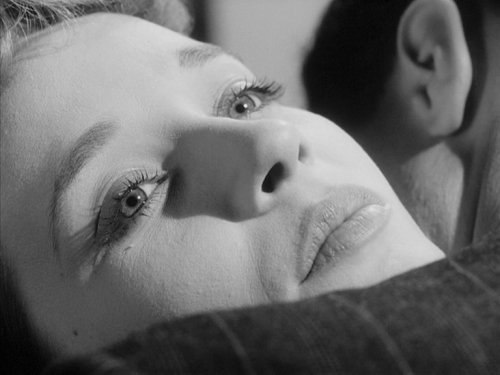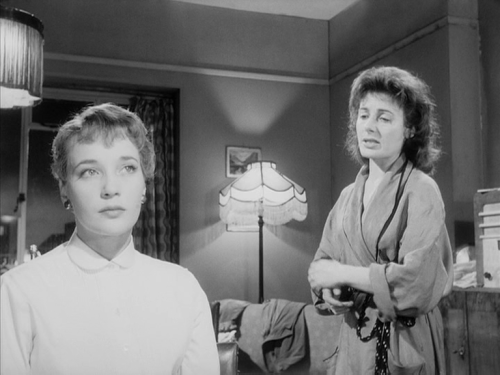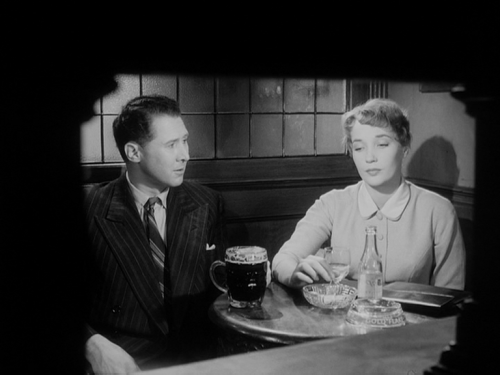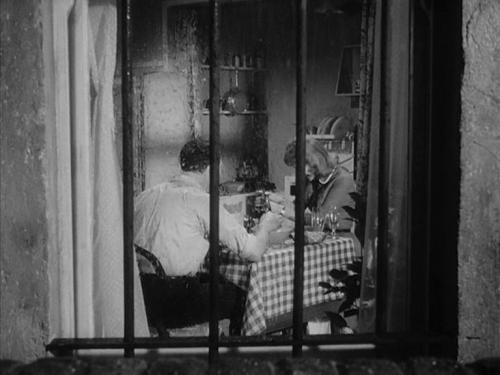This is the sixth of my notes about my ongoing series of films at The Woodmill Studios in Bermondsey. To see the entire line up and get all the details go here.
Woman in a Dressing Gown was recently re-released to cinema’s, apparently now ripe for rediscovery. Why had it lapsed into any obscurity? Perhaps its outlier status in its director’s career: J. Lee Thompson, known mostly for war films – Ice Cold in Alex, The Guns of the Navarone – hardly seems the natural choice for a domestic drama about a housewife’s claustrophobia and a husband’s infidelity. Or it might have been a problem of timing: too early for the British New Wave (and starring actors from an older, stagier tradition), it blurs the absolute lines of genre, personnel and period to be featured in the endless roll calls of gilt-edged British Classics.
Then again, it might have been the focus of the story: modern claimants for the film’s greatness have emphasised the rareness of its attentions to the struggle of an ordinary, unglamorous woman. The British New Wave, while offering earthier stories tended to focus on a rudderless but attractive younger man, rather than the quotidian issues of a woman. Amy is the titular woman, a dedicated but ineffectual housewife. She tends unswervingly to the needs of her son, Brian, and her husband, Jim (or Jimbo as she never fails to call him). However, Jim is conducting an affair with Georgie (Sylvia Sims), but she craves a more open happiness, with both agonised about how they he make a break with Amy.
The empathetic attention given to Amy raises the disappointment of a spoiled haircut to life and death proportions. While the thorough and unflinching depiction of her undiagnosed depression is the film’s most remarkable feature, it is with its breadth of sympathies that it becomes of enduring worth. Thomas Elsaesser pinpointed melodrama’s key perspective as that of the victim; the best melodramas are those that create a panorama of victimhood, to show the emotional binds that entrap all of the characters. Where Jim and Georgie could have been show selfishly inflicting pain for the sake of their own pleasure, we can both understand and empathise with their frailty, their desire to carve out happiness. They both have reasons to seek happiness in each other, are wounded in the illegitimacy of how it is claimed. Ted Willis, the film’s writer, described the film as exposing ‘good honest fumbling people caught up in tiny tragedies.’ ‘It ought to be possible to be happy without harming anyone,’ as Georgie says, yet the power of the film is to show the inextricable difficulty of this desire.
Woman in a Dressing Gown had been mounted in 1956 as a television play. Perhaps seeking to differentiate his cinematic product, J. Lee Thompson adds many extreme stylistic touches. We have Amy’s loud, upbeat music: the whole first half of the film seems to bathe in its manic volume and cloying ubiquity. It’s a powerful analogue for the false emotional affect of the home. There’s a ‘just out of reach’ quality to its simultaneously latent and ubiquity: ‘Tchiakovsky, so sad it could make you cry,’ says Amy, for once confronting the displacement activity of the loud music. ‘Can’t you switch that off?’ Jim unfeelingly replies.
Camera angles peer out from cupboards and in recesses of the flat, making the walls seem very close. Clashing with the British New Wave’s drive for grit, the sets are highly artificial, with the scattered location shoots clashing with the mainly studio shots. It would be a mistake to look at this production decision as a demerit. As the film progresses, the idea of façade comes to have greater potency, and the surroundings add a great deal to this. Despite the realism of the scenario, the settings are rendered melodramatically overdetermined. Thompson’s camera is forever eavesdropping: rising over wall partitions, framing lovers as though we are taking advantage of their intimacy.
After the uncomfortable perspectives and rhumbas in the domestic unit, the lover’s nest is idyllic: shot in close ups and clear medium shots, the sound of rain supplants the dialogue. The unselfconscious Britishness oozes out of every scene in Woman in a Dressing Gown. The lover’s assignation is conducted on a Sunday, and naturally there is a roast dinner. No romance before the gravy is finished. Although the film was marketed at the time as a success du scandale (the original poster boasted ‘Why not a movie about illicit love? It’s real, it happens and it’s a great picture.’), it is the total lack of salaciousness and sexiness that makes the film all the more poignant. Quayle himself is perfect to play a sympathetic love rat: known for playing dutiful officer types, he brings a sexual reticence to the role. His equivalent in Brief Encounter, Trevor Howard, is infinitely more dashing. Quayle provides an assurance of deeper emotions than lust behind their affair: we find it hard to believe in Amy’s accusation to Georgie that ‘You don’t love him, you just want to sleep with him.’ She is aggravated precisely for the opposite reason: because both women are irresistibly attracted to his frailty. Amy now realises the bitter reward for her kindness: infidelity. It is a relief that the film doesn’t blunt these complexities behind a coyly elliptical approach. Everyone is open about what is happening, except where repression is realistic. Have Georgie and Jim consummated their affair? The film makes the point moot: they have betrayed deeper intimacies than the physical.
If we can sympathise with Amy through her victimhood, it is when she reveals her true knowledge of Jim that we begin to respect and empathise with her. Through the film’s first two thirds, we see Amy’s fatal flaw as her inability to engage with the experience around her, to paper over the flaws in her fantasy of domestic bliss. Yet when Jim and Georgie confront her with the affair, she offers us unutterably poignant proof that she is aware of Jim’s faults – both minor and major – but unlike Jim himself, has learned to accept them as common human frailty.
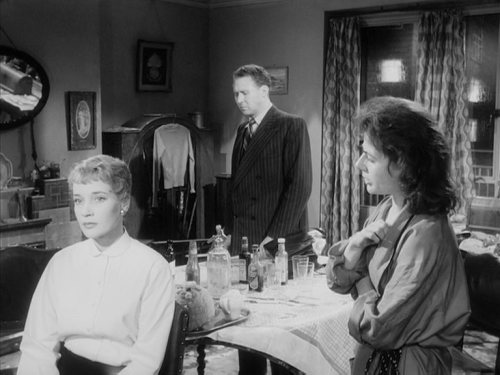
‘What does a woman like you want with a man like him? He’s not handsome or clever. He won’t make any fortunes. He’ll be old in ten years… Do you know that he snores? Do you know that he loses his temper if his paper is creased? He can’t stand the sunshine, has to sit in the shade; gets rheumatism every winter. That he smothers the food you’ve cooked him in sauce, whatever it is, whole dollops of the stuff. You know a thousand things about him; I know a million. That’s what being married means. To know a man inside out and still love him.’
The evisceration of his character at this point shows us how much we have been inculcated into Jim’s rather than Amy’s point of view. The way that these subconscious details about Jim have accumulated, that we have watched him reach for the sauce (and Amy lovingly and ungrudgingly lay them out for him), now hits with a rare force. It’s one of the saddest moments I know in cinema, almost to the extent that the ending is obscured by it. Having reached this epiphany, the couple’s eventual reconciliation seems to make only structural sense. Georgie is right to leave Jim: all that is said by Amy is true, and we can understand her loss of Jim’s love as an important piece of self-knowledge. But without mutual compassion surely the husband and wife relationship is doomed? Jim remains a victim: he knows his fault – ‘You see the same person every day, you don’t see them at all’ – but what assurance do we have, beyond narrative closure and the presumption of happiness that goes with it, that he will be able to help Amy?


